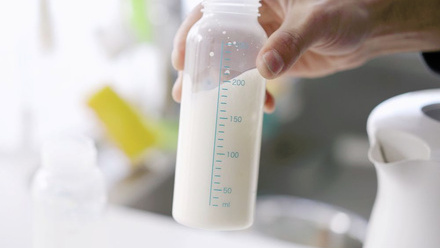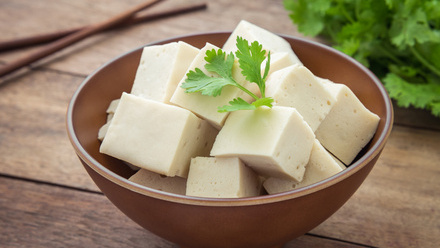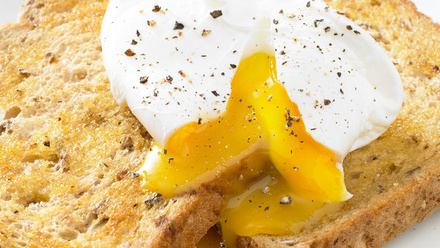Making pasta isn’t as difficult as you might think and you can have loads of fun experimenting with different shapes and fillings. We use 00 flour because it’s so fine and high in gluten, which makes the dough elastic and perfect for homemade pasta.
Ingredients
200g 00 flour (plus extra for rolling)
2 large eggs
1 large egg yolk
1 x 15ml olive oil (for cooking)
Equipment
Weighing scales
1 large bowl
Table knife
Small measuring jug
Small bowl
Fork
Tablespoon
Spatula or metal spoon for mixing
Rolling pin
Cling film or greaseproof paper
Teaspoon
Pastry brush
Pastry cutter (78mm or 88mm)
Large pan
Slotted spoon
Kitchen paper or clean tea towel
Instructions
- Weigh the flour into a large bowl. Using the back of the table knife, crack the two whole eggs into the measuring jug. Crack the remaining egg over a small bowl and separate the yolk from the white. Place the yolk in the measuring jug alongside the whole eggs. Gently mix the eggs with a fork.
- With a tablespoon, make a deep hole/well in the flour and pour in the egg mixture. Using a spoon or your fingers, gently flick some of the flour over the pool of egg so that it’s covered. Gently, begin to stir in the eggs and as you do so, gradually begin to add in the flour a little at a time. Using your hands, bring the dough together into one lump, dust your worktop with flour (don’t use too much as it will make your dough tough).
- Remove from the bowl and then knead for 3-4 minutes until it is smooth and supple.
- Dust your rolling pin with flour and begin rolling. Roll the pasta to double in size and then fold in half and repeat the process 20 times. You will need to end up with a uniform rectangular piece of pasta which measures at least 20cm by 30cm. Cut the pasta in half so you have two strips, each measuring approximately 7.5cm x 30cm. You may find it easier to roll on to cling film or greaseproof paper.
- Once rolled out, add 4 separate heaped teaspoons of your filling to one strip of pasta, leaving a 2cm border of pasta around the filling. Brush around the pasta with a little water on a pastry brush and place the second strip over the top of the other half of the pasta sheet and filling. You are making 4 raviolis.
- Gently press down on the pasta to squeeze out any air and then cut out the ravioli using a pastry cutter. Push the edges of the ravioli down with a fork.
- Heat up a large pan of water. When boiling, carefully drop in the ravioli one by one using a slotted spoon. They need to cook for 5 minutes and will float to the top when ready. Remove the ravioli from the pan with a slotted spoon and drain on kitchen towel or a clean tea towel. In a frying pan, heat olive oil over a medium heat. Add the raviolis for 2 minutes each side, taking care that they don’t stick, until they are a light golden brown.
- Sprinkle over some parsley and black pepper (if using) and enjoy.
Skills used include:
Weighing, mixing, rolling, kneading, boiling/simmering and frying.
Top Tips
- Seal the ravioli with water before cooking to make sure they don’t burst in the water.
Something to try next time
- Try making different flavoured pasta – add fresh or dried herbs or 2 x 5ml spoons of tomato purée to the dough.
Prepare now, eat later
- The pasta dough can be made in advance, wrapped in cling film, or placed in a sealed bag, and stored in the fridge for up to 48 hours.
Get more from your food
- Freeze leftover egg white to use in meringues or soufflé.
- Unused raw pasta can be frozen for up to 3 months.







